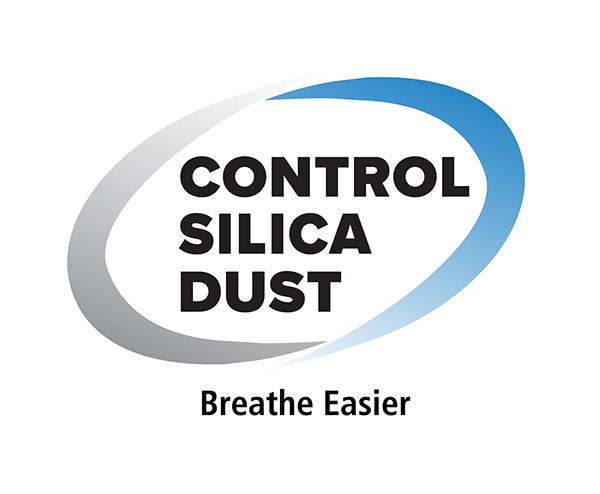Silica, Crystalline
Health Effects
Protecting Workers from Silica Hazards in the Workplace Video
An introduction on the hazards of exposure to respirable crystalline silica.
Breathing in very small ("respirable") crystalline silica particles, causes multiple diseases, including silicosis, an incurable lung disease that leads to disability and death. Respirable crystalline silica also causes lung cancer, chronic obstructive pulmonary disease (COPD), and kidney disease. Exposure to respirable crystalline silica is related to the development of autoimmune disorders and cardiovascular impairment. These occupational diseases are life-altering and debilitating disorders that annually affect thousands of workers across the United States.
Silicosis
Breathing crystalline silica dust can cause silicosis, which in severe cases can be disabling, or even fatal. When silica dust enters the lungs, it causes the formation of scar tissue, which makes it difficult for the lungs to take in oxygen. There is no cure for silicosis.
Silicosis typically occurs after 15–20 years of occupational exposure to respirable crystalline silica. Symptoms may or may not be obvious; therefore, workers need to have a chest x-ray to determine if there is lung damage. As the disease progresses, the worker may experience shortness of breath upon exercising. In the later stages, the worker may experience fatigue, extreme shortness of breath, chest pain, or respiratory failure.
Because silicosis affects the immune system, exposure to silica increases the risk of lung infections, such as tuberculosis. In addition, smoking causes lung damage and adds to the damage caused by breathing silica dust.
In rare instances, individuals exposed to very high concentrations of respirable crystalline silica can develop typical silicosis symptoms as well as fever and weight loss within weeks instead of years. In these cases, medical evaluation should be performed as soon as possible.
Lung Cancer
Exposure to respirable crystalline silica increases the risk of developing lung cancer. Lung cancer is a disease where abnormal cells grow uncontrollably into tumors, interfering with lung function. The abnormal cancer cells can also travel ("metastasize") and cause damage to other parts of the body. Most cases are not curable.
Chronic Obstructive Pulmonary Disease (COPD)
Exposure to respirable crystalline silica increases the risk of other lung diseases, primarily COPD, which includes emphysema and chronic bronchitis. The main symptom of COPD is shortness of breath due to difficulty breathing air into the lungs. COPD is not usually reversible and may worsen over time.
Kidney Disease
Studies of workers exposed to respirable crystalline silica have found that these workers are at increased risk of developing kidney disease. For instance, kidney failure has been observed among workers with high silica exposure, such as in abrasive blasters who also were suffering from silicosis.
1938 "Stop Silicosis" Video
The hazard of respirable crystalline silica exposure has been known for decades. This 1938 video features former Secretary of Labor, Frances Perkins (1933-1945), and describes both the hazards associated with silica exposure and the U.S. Department of Labor's early efforts to ensure safe and healthful working conditions for America's working men and women. Although tremendous progress has been made since this video was produced, evidence indicates that a substantial number of workers still suffer from silica-related diseases. This video is available for download at http://archive.org/details/StopSilicosis
2016 "Stop Silicosis" Video.
An introduction to the respirable crystalline silica standards impact on worker health.
These resources provide information about the adverse health effects caused by inhaling respirable crystalline silica.
- NIOSH Hazard Review (April 2002). U.S. Department of Health and Human Services, National Institute for Occupational Safety and Health (NIOSH). Describes published studies and literature on the health effects of occupational exposure to respirable crystalline silica among workers in the U.S., and many other countries.
- Centers for Disease Control and Prevention (CDC) Morbidity and Mortality Weekly Reports
- Silicosis mortality trends and new exposures to repsirable crystalline silica – U.S., 2001-2010. (February 13, 2015)
- Silicosis Mortality – United States, 1999-2013. (June 19, 2015)
- National Toxicology Progam (NTP) Report on Carcinogens (RoC). U.S. Department of Health and Human Services (DHHS), National Toxicology Program (NTP). Identifies and discusses agents, substances, mixtures, or exposure circumstances that may pose a health hazard due to their carcinogenicity. The listing of substances in the RoC only indicates a potential hazard and does not establish the exposure conditions that would pose cancer risks to individuals. Silica, Crystalline (Respirable Size). NTP classification: Known to be a human carcinogen.
- International Agency for Research on Cancer (IARC) Monographs on the Evaluation of Carcinogenic Risks for Humans. World Health Organization, International Agency for Research on Cancer, (2006). IARC Classification: Carcinogenic to humans (Group 1).
- Understanding Silicosis. American Lung Association. This video explains how silicosis can be caused by workplace exposures to respirable crystalline silica and how to prevent this disease.
- Silica Exposure. WorkSafe BC video shows how respirable crystalline silica can cause permanent damage to the lungs.
- Adverse Effects of Crystalline Silica Exposure. American Thoracic Society (1996).
- Appendix B: Medical Surveillance Guidelines (Construction | General Industry and Maritime). OSHA. This document describes the silica related diseases and provides resources and references.
- Several resources for information on radiography are available:
- Chest Radiography: The NIOSH B Reader Program. Provides information on becoming a B Reader for silica radiography and recent developments impacting the program.
- Chest Radiography: Digital Imaging Updates. Provides a repository of information and resources for the B reader program.


